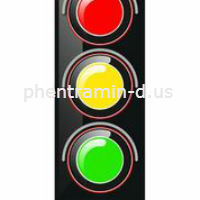
Traffic light food labels show a red, green, or yellow light, depending on the health level of the food.
According to a research by the University of Bonn involving 35 participants, traffic light food labels are more effective in aiding consumers to resist high calorie foods than a generic food label. Approximately 100 products, from yogurt and chocolate to readymade meals, were shown to the participants. This information was given to the participants in the form of a nutritional label and traffic light labels. The research, employing a brain scanner, showed that red light triggered a structure which is repeatedly associated with self-control.
The prefrontal cortex estimates the value of a food through the reward system, decreasing the willingness of a person to pay for unhealthy foods. A study published in the Journal of Obesity examined the shopping decisions of the consumers in the brain scanners. The participants were ready to pay more for the same product with a green traffic light label and showed less interest in paying for them if they were labeled red.
Another study published in the American Marketing Association’s Journal of Public Policy and Marketing indicated consumers with low self-control were able to fight food temptations and made fitter food choices in response to the traffic signal label. High self-control consumers did not react to the color codes. (A questionnaire assessed high and low self-control consumers).
The traffic light system highlights the significance of ingredients for buying decisions as compared to simple nutrition information. Another research published in the International Journal of Consumer Studies showed that consumers choose low calorie food products with food navigation labeling systems. Consumers initially considered this food navigation less useful than nutritional percentage labels. However, behavioral economists observed the exact opposite results. This can be deemed overconfidence of the buyers who believed they hold more information than they actually did.
The traffic light food labels encourage the consumers to avoid unhealthy products as compared to a normal label with information about calories and grams. The traffic label increases consumers’ focus on fitness. The current FDA supports the traffic light system idea to make people more capable of making better food decisions.


Recent Comments